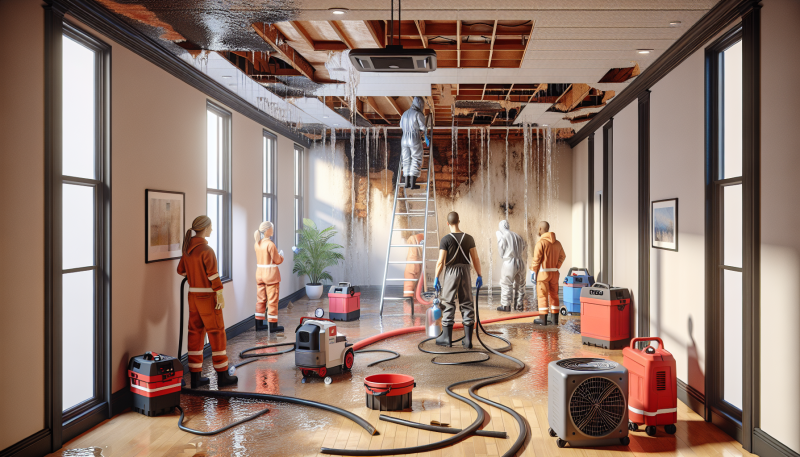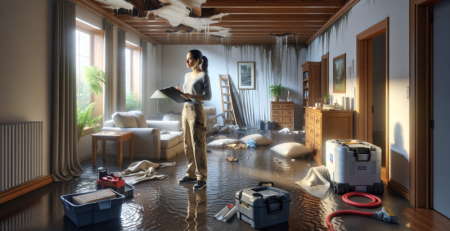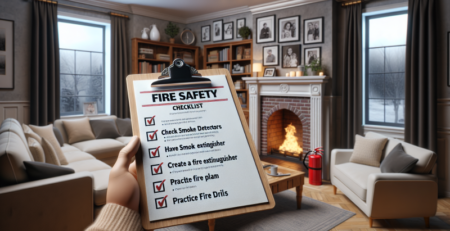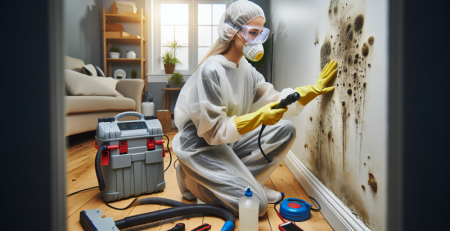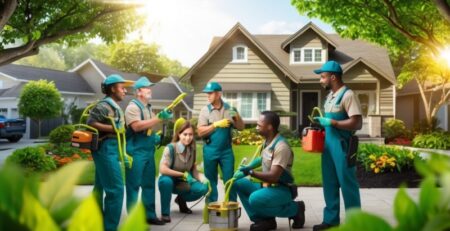Emergency Water Damage Restoration Guide
Water damage can strike when you least expect it, turning your home into a soggy mess. Whether it’s from a burst pipe, a leaky roof, or a natural disaster, knowing how to handle water damage is crucial. In this guide, we’ll walk you through the steps of emergency water damage restoration, ensuring you can act quickly and effectively to minimize damage and restore your property.
Understanding Water Damage
Water damage isn’t just about wet carpets and soggy walls. It can lead to serious structural issues and health hazards if not addressed promptly. Let’s dive into the different types of water damage and their potential impacts.
Types of Water Damage
Water damage can be classified into three categories:
- Clean Water Damage: This is caused by water from clean sources like broken pipes or rainwater. It’s the least harmful but still requires immediate attention.
- Grey Water Damage: This involves water from appliances like washing machines or dishwashers. It may contain contaminants and can cause illness if ingested.
- Black Water Damage: This is the most severe type, involving water from sewage or flooding. It’s highly contaminated and poses serious health risks.
Potential Impacts
Water damage can lead to:
- Structural Damage: Water can weaken the foundation, walls, and floors, leading to costly repairs.
- Mold Growth: Mold can start growing within 24-48 hours, causing health issues and further damage.
- Electrical Hazards: Water and electricity don’t mix. Damaged wiring can lead to fires or electrocution.
For more information on the types of water damage and their impacts, check out our water cleanup services.
Immediate Steps to Take
When water damage occurs, time is of the essence. Here are the immediate steps you should take to mitigate damage and ensure safety.
Ensure Safety First
- Turn Off Electricity: If it’s safe to do so, turn off the electricity to prevent electrical hazards.
- Evacuate if Necessary: If the water damage is severe, evacuate the premises and call for help.
Stop the Water Source
Identify and stop the source of water. This could involve turning off the main water supply or fixing a broken pipe. If you’re unable to locate the source, contact Kraus Restoration for professional assistance.
Remove Excess Water
Use buckets, mops, or wet/dry vacuums to remove standing water. The quicker you remove the water, the less damage it will cause.
Protect Your Belongings
Move furniture and valuables to a dry area. Place aluminum foil or wood blocks under furniture legs to prevent further damage.
For more detailed steps on immediate actions, visit our services page.
Professional Water Damage Restoration
While immediate actions are crucial, professional restoration services are essential for thorough cleanup and repair. Here’s what you can expect from professional water damage restoration.
Assessment and Inspection
Professionals will assess the extent of the damage using specialized equipment. This helps in creating a detailed restoration plan.
Water Removal and Drying
Using powerful pumps and industrial-grade dehumidifiers, professionals will remove water and dry the affected areas. This step is crucial to prevent mold growth.
Cleaning and Sanitizing
All affected areas and belongings will be cleaned and sanitized to remove contaminants and prevent mold growth. This includes using antimicrobial treatments.
Restoration and Repairs
Finally, professionals will restore your property to its pre-damage condition. This may involve minor repairs like replacing drywall or major reconstruction projects.
For more information on our professional restoration services, visit our water cleanup page.
Mold Cleanup and Prevention
Mold is a common consequence of water damage. It can start growing within 24-48 hours and pose serious health risks. Here’s how to handle mold cleanup and prevent future growth.
Identifying Mold
Mold can appear as black, green, or white spots on walls, ceilings, and other surfaces. It often has a musty odor.
Mold Cleanup Process
- Containment: Professionals will contain the affected area to prevent mold spores from spreading.
- Removal: Mold-infested materials will be removed and disposed of safely.
- Cleaning: Surfaces will be cleaned with antimicrobial treatments to kill mold spores.
Prevention Tips
- Control Humidity: Use dehumidifiers to keep indoor humidity levels below 60%.
- Fix Leaks Promptly: Address any leaks or water issues immediately.
- Ventilate: Ensure proper ventilation in areas prone to moisture, like bathrooms and kitchens.
For more information on mold cleanup, visit our mold cleanup page.
Fire Damage Repair
Fire damage often goes hand-in-hand with water damage, especially when firefighting efforts are involved. Here’s how to handle fire damage repair.
Assessing Fire Damage
Professionals will assess the extent of fire and smoke damage. This includes checking structural integrity and identifying areas that need repair.
Smoke and Soot Removal
Smoke and soot can cause significant damage and health issues. Professionals will use specialized equipment to remove smoke and soot from surfaces.
Odor Removal
Smoke odors can linger long after the fire is out. Professionals will use advanced deodorization techniques to eliminate odors.
Restoration and Reconstruction
Finally, professionals will restore your property to its pre-fire condition. This may involve minor repairs or major reconstruction projects.
For more information on fire damage repair, visit our fire cleanup page.
Conclusion
Water damage can be a nightmare, but knowing how to handle it can make all the difference. From immediate actions to professional restoration, this guide has covered everything you need to know. Remember, the key to minimizing damage is acting quickly and seeking professional help when needed.
Kraus Restoration is here to help with all your water, mold, and fire damage restoration needs. We offer 24/7 emergency services, rapid response, and IICRC certified experts. Serving Central and Northern NJ, we’re your go-to experts for property damage restoration. Call us at (973) 886-2021 or visit our contact page for more information.
FAQs
What should I do immediately after discovering water damage?
First, ensure safety by turning off electricity and evacuating if necessary. Then, stop the water source and remove excess water. Finally, protect your belongings by moving them to a dry area.
How quickly should I act to prevent mold growth?
Mold can start growing within 24-48 hours, so it’s crucial to act quickly. Remove water and dry the affected areas as soon as possible.
Can I handle water damage restoration myself?
While you can take immediate actions, professional restoration services are essential for thorough cleanup and repair. Professionals have the equipment and expertise to handle water damage effectively.
What are the signs of mold growth?
Mold can appear as black, green, or white spots on surfaces. It often has a musty odor. If you notice these signs, contact a professional for mold cleanup.
How can I prevent future water damage?
Regular maintenance, fixing leaks promptly, and controlling indoor humidity levels can help prevent future water damage. Ensure proper ventilation in areas prone to moisture.
